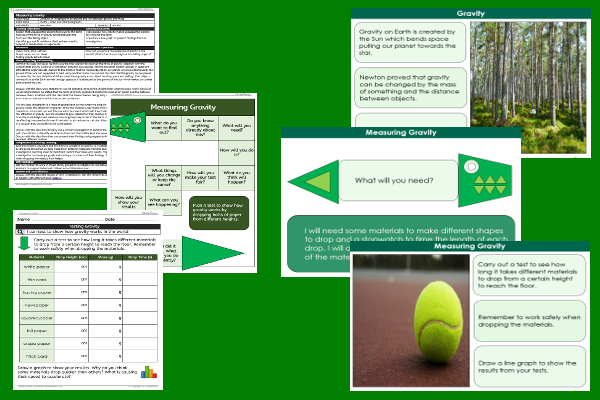Lesson Four – Measuring Gravity

This science teaching pack for Key Stage Two gets the children to conduct and present results from a scientific investigation that explores the link between the force of gravity and the mass of objects.
The class can practise using a line graph to organise and display the measurement data that has been collected and recorded during their investigation into gravity.
Download this teaching pack including a lesson plan, classroom activities and an interactive presentation to conduct and present results from a scientific investigation that explores the link between the force of gravity and the mass of objects
Activities in this teaching pack include a template to plan and record the results to an investigation exploring the link between gravity and mass and a worksheet to record the results of a scientific test into the link between the force of gravity and the mass of objects.
The interactive presentation can be used to explore how to conduct and present results of an investigation exploring the link between gravity and mass.
This lesson is part of a science scheme of work to get the children to investigate, test and record some of the effects that the force of gravity can have on a range of different objects and materials. There are teaching activities for shared learning, differentiated worksheets to support independent learning and interactive presentations to introduce concepts and key skills.
-

Determinant Lists
Explain and model how to make lists of objects used and found in different locations to match the correct determinants of a and an
-

English SPAG Assessment
Assess abilities in composing sentences for fiction and non-fiction using the correct spellings, punctuation marks and grammar vocabulary phrases
-

Maths Arithmetic Assessment
Assess abilities in solving arithmetic number problems for addition, subtraction, multiplication and division when working with informal and formal written calculations
-

Environment
Identify and describe some of the special landscapes and locations that can be found in the world and reflect on how they can be protected and preserved for the future
